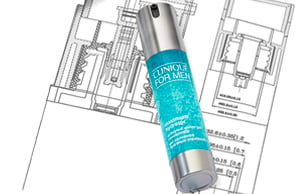We all know what a lotion pump does; it delivers a thick, smooth liquid preparation applied to the skin for different purposes. But have you ever wondered how it worked? While there are many different designs and types of pumps available today, the basic principle is the same.
Components of a Lotion Pump
These are the components that help pump a product from the bottle to your hand:
Actuator
This is what you press down to pump a product out of its container. It’s usually made out of PP plastic and can come in many different designs and styles, some of which have locking features to prevent accidentally dosage.
Closure
The closure is what keeps the entire assembly together and holds it onto the bottle. It’s usually made of PP plastic and comes with many different finish and design options, including, but not limited to, metal over shells.
Outer Gasket
The gasket is usually located inside the closure and acts as a barrier to prevent leaks. It can be made from many different materials, so it’s important to test your product to ensure compatibility.
Housing
The housing holds all the pieces of the pump in place, and acts as a chamber to transfer the product from the dip tube to the actuator. Its usually made from PP plastic and can come in a wide variety of styles and sizes, depending on the pump’s output and design. If you’re fitting a pump to a glass bottle, make sure to check for fit and test for function and compatibility – glass bottles often have side walls that are thicker than you might expect.
Interior Components
Held together inside the housing, you can usually find components such as the stem, piston, spring, and ball – this can vary from pump to pump, and some pumps might have additional components to aid flow or create a metal-free pathway to eliminate compatibility issues.
Dip Tube
The dip tube is the long plastic tube, usually PP, that goes from the bottom of the bottle to the pump. The size of the dip tube depends on the bottle and is usually cut in such a way as to maximize output and prevent clogging.








